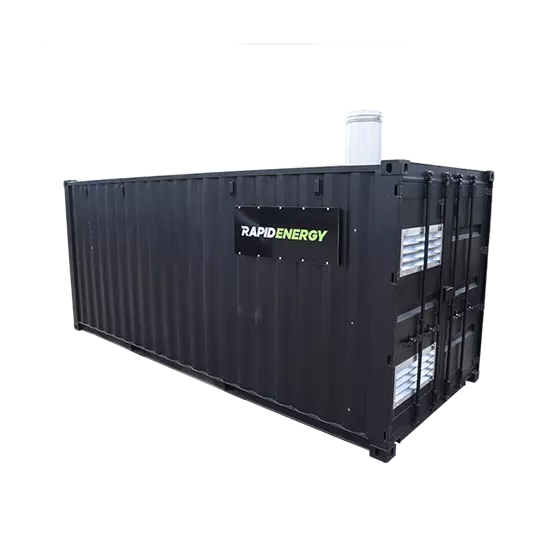-

-
0800 464 7025 Available 24/7
-

-
0800 464 7025 Available 24/7
We received a call at 3PM on Thursday from a client based in Greater London. They had experienced a complete failure within their plant room, leaving over 400 residents without heating or hot water. During the call it was quickly established that the client required a site survey to determine the best solution to restore critical services to their facility.
At 4:30PM, Rapid Energy’s team arrived on site to conduct a scope of works to determine the appropriate hire solution.

The client’s existing system was made up of three separate circuits supplying different areas of the building. These circuits were supplying the heat interface units within each apartment. We therefore had to identify the most appropriate place to isolate and connect into these circuits. This was necessary to ensure we had enough pump capacity to provide adequate circulation around the building.
We identified two different locations on the primary pipework that we could isolate to enable our temporary hoses to connect onto. And that included supplying 2 x 4 inch welded T-pieces to split the hoses supplied by the 1.3MW into two different circuits.
Another consideration was ensuring that the heat from the temporary boilers would reach the very top of the building, which was over 16 stories high. We installed additional heat exchangers and pump sets, to ensure the solution would run over 6.5 bar of pressure. This solution allowed heat to reach the top of the building.
The closest landing location of the temporary boilers was over 60 metres away. This location was also on a different floor from the permanent plant room, which was located in the basement. Because we were connecting into two separate primary circuits with two separate temporary boilers, this meant we required over 240 metres of high pressure hose for the flow and returns.
It’s important to emphasise that our team was on a very tight deadline. The client required this solution ASAP, preferably implemented within 36 hours to keep disruption and complaints from the residents to a minimum.
Upon instruction from the client, equipment was ring-fenced and loaded onto the HIABs as soon as possible. An emergency fuel delivery was arranged and our team of engineers mobilised. Within 16 hours, all the necessary equipment was delivered and landed onsite. Our engineers then isolated the permanent system utilising the existing isolation valves on the different primary circuits. Our team then installed 8 inch to 4 inch reducers on the primary pipework, allowing us to connect our temporary boilers.
Once the connection points were installed, our 4 man team proceeded to lay out a total of 240 metres of hose. This included a route through the residents car park which had to be fenced off to comply with health and safety. As always, the health and safety of our engineers, operatives and residents onsite was paramount. The site address for the boilers was located on a very busy road. Our team carried out traffic marshalling and management during the offloading of the temporary boilers and equipment.
Once both sets of flow and returns were connected to the temporary boilers, we then began the commissioning process by filling and venting to pressurise the system. The pressure was raised to over 6 bar to ensure heat reached all areas of the building. Once completed, the engineers commissioned both boilers, which included a call to Rapid Energy’s HQ to confirm visuals on the BMS.
From the moment we were instructed, we delivered, installed and commissioned a temporary heating solution within 24 hours, resulting in over 400 very happy residents.
If you or a client of yours requires a temporary boiler, you can view our entire boiler range by clicking here.








